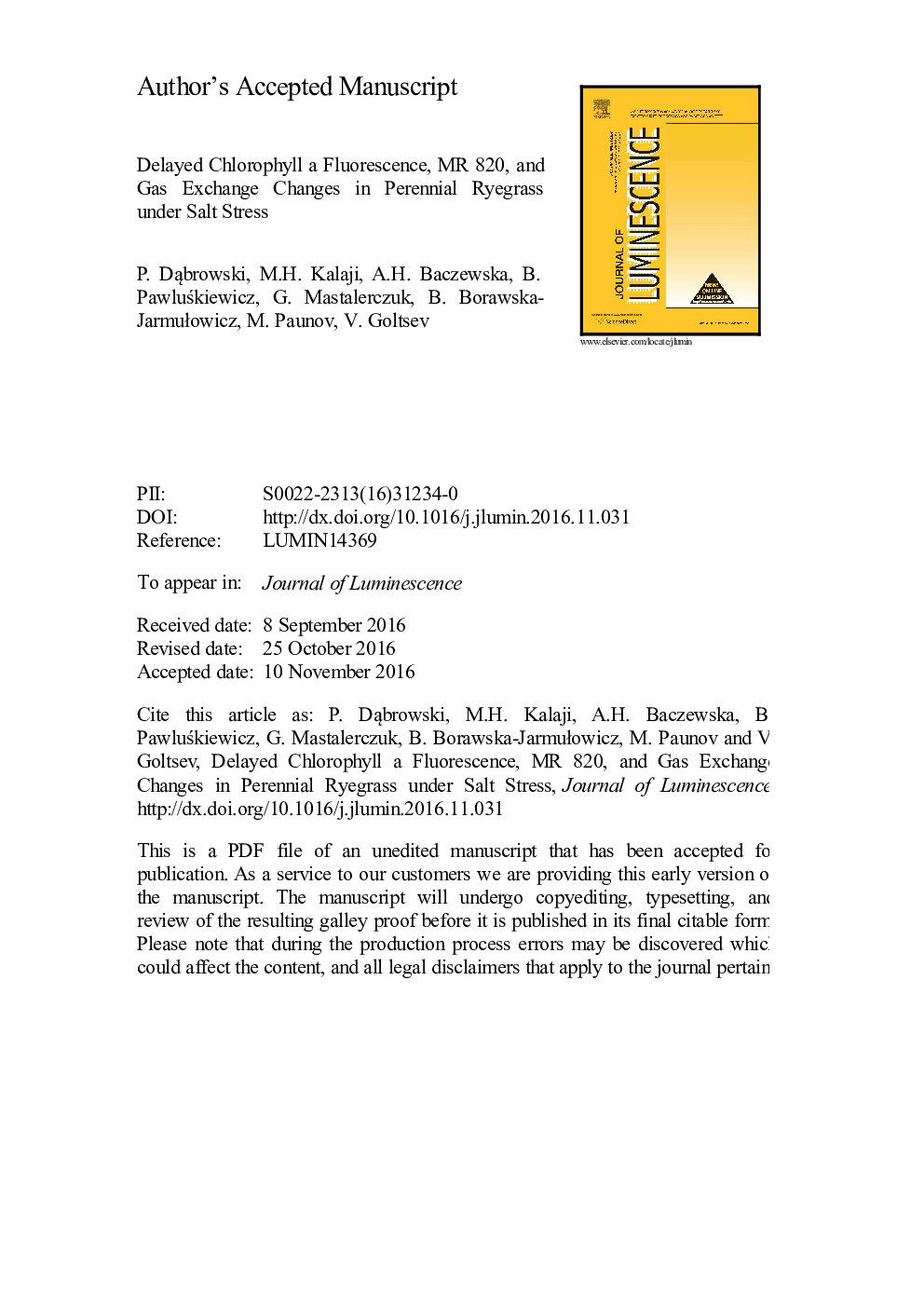| Article ID | Journal | Published Year | Pages | File Type |
|---|---|---|---|---|
| 5397689 | Journal of Luminescence | 2017 | 35 Pages |
Abstract
Perennial ryegrass (Lolium perenne L.) is one of the more popular grass species in Europe. It is commonly used for starting lawns in urban areas, where plant growth is limited by many environmental conditions. The contamination of soils by salt is one of the major problems in urban green areas, as well as in natural areas. The basic aim of this study is to provide a detailed in vivo analysis of the changes in the delayed chlorophyll fluorescence and MR 820 signals (induced by salt stress) of two lawn varieties of perennial ryegrass, and to find out if there are correlations between these parameters and gas exchange. Two lawn varieties of Lolium perenne L. were used: Nira and Roadrunner. Salinization was performed at 8 weeks after sowing by adding NaCl in water solution (0, 0.15, and 0.30Â M). There were 8 terms of measurement: 0Â h, 24Â h, 48Â h, 96Â h, 144Â h, 192Â h, 240Â h, and 288Â h after salinization. Our results showed that delayed fluorescence is a tool that can bring completely new opportunities for detecting stress in plants caused by salt. Our work allowed us to identify various limitation patterns in the photosynthetic efficiency of perennial ryegrass lawn varieties grown under salt stress conditions. Significant differences between the two tested varieties in response to salt stress were confirmed.
Keywords
Related Topics
Physical Sciences and Engineering
Chemistry
Physical and Theoretical Chemistry
Authors
P. DÄ
browski, M.H. Kalaji, A.H. Baczewska, B. PawluÅkiewicz, G. Mastalerczuk, B. Borawska-JarmuÅowicz, M. Paunov, V. Goltsev,
